
Metropolitan Transport Information System
by Digital Geographic Research Corporation
35+ years innovating
- HOME
- PRODUCTS & SERVICES
- RESOURCES
News & Commentary News & Press Reports Light Technical Geography 80-20 (nuggets for adults) Geography Kids' Hangout Technical METRIS Publications GIS Publications Associated projects NCRST VITAL
- ABOUT
News
METRIS completes 10 years of commercial services
2020-12It was in December 2010 that METRIS graduated from USDOT sponsorship and first offered services commercially. We're thrilled and grateful that partners who signed up then are still with us.
In the course of the past decade we pioneered turn time calculation, then LiveQ real-time turn time. We're weeks away from announcing AcQ 3.0, the newest iteration of the turn time algorithm. Stay tuned!
METRIS wins Tech Day
2017-08METRIS LiveQ was one of four winners of the Tech Day competition sponsored by the Urban Freight Lab at the University of Washington Supply Chain Transportation & Logistics Center. The contest was for technologies that could facilitate metropolitan freight. DGRC is honored to share the podium with Civic Smarts (parking space management), Hurtler Motors (electric autonomous vehicles) and Ucella (secure delivery boxes).
Turn Time Sprightly in April
2016-05April turn time scored 44 on the METRIS Turn Time Performance Index. March had been phenomenal (relative to recent history), at 49, attributable to a huge Chinese New Year volume dip, that provided a respite from a long run of capacity stress. That benefit lingers: barring March, the April numbers were the best in 2 years.
Container Volume is the Best Predictor of Turn Time
2016-04 Turn time in March hit a 30-month high of 49 on the METRIS Turn Time Performance Index, probably due to a drop in volume. Volume also impacts the performance of individual terminals relative to each other. The bigger the terminal, the slower the turn time. 70% of the difference among terminals is explained by this.
Turn time in March hit a 30-month high of 49 on the METRIS Turn Time Performance Index, probably due to a drop in volume. Volume also impacts the performance of individual terminals relative to each other. The bigger the terminal, the slower the turn time. 70% of the difference among terminals is explained by this.
Turn Time is Not Just a Trucking Problem
2015-12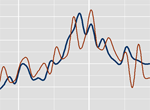 Turn time remains stuck at or below 40 on the METRIS Turn Time Performance Index, as it has been for the past year. Tracing data back a few years, there is a spectacular correspondence between turn time and marine terminal labor expenditures, indicating that turn time is not just a trucking problem.
Turn time remains stuck at or below 40 on the METRIS Turn Time Performance Index, as it has been for the past year. Tracing data back a few years, there is a spectacular correspondence between turn time and marine terminal labor expenditures, indicating that turn time is not just a trucking problem.
Turn Time Stuck in the Doldrums?
2015-07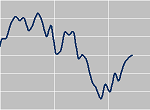 Turn time performance has recovered most of what it lost last year, but remains stuck at a level comparable to where it was during the clerks' strike in late 2012. Severe problems continue at three terminals.
Turn time performance has recovered most of what it lost last year, but remains stuck at a level comparable to where it was during the clerks' strike in late 2012. Severe problems continue at three terminals.
Slow Improvement in Turn Time
2015-04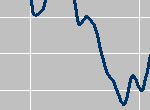 Following a disastrous 2014, turn time improved considerably in February. It then leveled off in March as volume swelled. Labor disruptions appear to be firmly in the past, but other factors that contributed to the 2014 debacle will not be reversed soon.
Following a disastrous 2014, turn time improved considerably in February. It then leveled off in March as volume swelled. Labor disruptions appear to be firmly in the past, but other factors that contributed to the 2014 debacle will not be reversed soon.
Turn Time Performance Continues Downward Trend
2014-12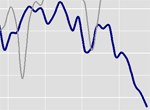 Turn time in November hit a record low for the fourth straight month, scoring 28 on the 100-point METRIS Turn Time Performance Index. This downward trend in performance is no longer attributable to near-record volume. The likely causes are (a) labor disruptions and (b) propagation of previous congestion.
Turn time in November hit a record low for the fourth straight month, scoring 28 on the 100-point METRIS Turn Time Performance Index. This downward trend in performance is no longer attributable to near-record volume. The likely causes are (a) labor disruptions and (b) propagation of previous congestion.
Volume is Driving Congestion in Los Angeles/Long Beach
2014-11 Turn time in October was the worst in 5 years. This is probably due to volume, which registered its 4th-highest month ever in September. However, October volume dropped relative to September, yet turn time continued to deteriorate.
Turn time in October was the worst in 5 years. This is probably due to volume, which registered its 4th-highest month ever in September. However, October volume dropped relative to September, yet turn time continued to deteriorate.
Turn Time in Los Angeles/Long Beach Increased 50% Over Four Years
2014-09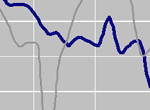 Some metrics of turn time in the ports of Long Beach and Los Angeles have worsened 50% since we published a major turn time study in 2011. The time a trucker must budget for a punctual delivery was 2 hours in 2011. It is 3 hours today.
Some metrics of turn time in the ports of Long Beach and Los Angeles have worsened 50% since we published a major turn time study in 2011. The time a trucker must budget for a punctual delivery was 2 hours in 2011. It is 3 hours today.
Long Beach and Los Angeles Ports Operated at 30–40% During Strike
2012-12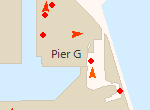 The ports of Long Beach and Los Angeles operated at about 30–40% of typical activity levels due to a labor strike at marine terminals. Our findings
are based on a sample of METRIS-equipped trucks that service the ports.
The ports of Long Beach and Los Angeles operated at about 30–40% of typical activity levels due to a labor strike at marine terminals. Our findings
are based on a sample of METRIS-equipped trucks that service the ports.
METRIS Announces LiveQ
2012-03At a meeting of The Waterfront Coalition in Long Beach, DGRC unveiled its LiveQ service, a unique control-tower-like monitor that reports truck queue conditions at the San Pedro ports in real time. LiveQ graphically indicates queue length, dwell time, progress and confidence. While LiveQ will not eliminate entry queues, it reduces the longest ones, improving service reliability.
Turn Time Report on the Los Angeles and Long Beach Ports
2011-04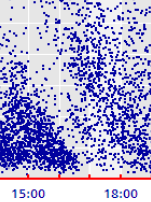 Ability/Tri-Modal and PierPass Inc released the study, “Taking the Pulse of the Ports: Duration of Truck Visits to Marine Terminals” conducted by DGRC for the Truck Turn-Time Stakeholders Group (TTSG). “The study points to ways to further increase efficiency of container moves,” said Bruce
Wargo, President and CEO of PierPass. “Terminal operators should carefully review their lunch hour and break practices to minimize the amount of waiting in the yard.”
Ability/Tri-Modal and PierPass Inc released the study, “Taking the Pulse of the Ports: Duration of Truck Visits to Marine Terminals” conducted by DGRC for the Truck Turn-Time Stakeholders Group (TTSG). “The study points to ways to further increase efficiency of container moves,” said Bruce
Wargo, President and CEO of PierPass. “Terminal operators should carefully review their lunch hour and break practices to minimize the amount of waiting in the yard.”
TTSG comprises motor carriers, marine terminal operators, beneficial cargo owners and the ports of Long Beach and Los Angeles. PierPass contracted DGRC on behalf of TTSG to conduct this study, with equal funding from Ability/Tri-Modal (on behalf of the California Trucking Association), PierPass, the Port of Long Beach and the Port of Los Angeles.
USDOT Funds METRIS Deployment
2007-05The U.S. Department of Transportation's Research and Innovative Technology Administration funded a consortium led by the University of California, Santa Barbara to deploy METRIS in the San Pedro Bay ports (Los Angeles and Long Beach), and to develop analyses and models for freight congestion mitigation. The news release from USDOT states: “The University of California, Santa Barbara is one of several universities selected to partner with the U.S. Department of Transportation’s Research and Innovative Technology Administration (RITA) to improve transportation system performance and reduce construction and maintenance costs through remote sensing and spatial information technologies. The University of California, Santa Barbara research team will work with state and local agencies, industry partners and service providers to reduce freight congestion at the ports of Los Angeles and Long Beach through a network of remote sensors and technology support systems.” Part of the National Consortia on Remote Sensing and Transportation (NCRST), the consortium includes the University of Washington, the California Marine and Intermodal Transportation System Advisory Council (CALMITSAC), and consultants Patty Senecal and John Glanville. TeleAtlas, DigitalGlobe, APL, the Port of Long Beach, California Department of Transportation and Los Angeles Department of Transportation are cost-sharing partners.
METRIS in the Press
2015
“Long truck turn times in LA-LB persist after congestion clears.” Bill Mongelluzzo in Journal of Commerce
“U.S. Container Port Congestion & Related International Supply Chain Issues: Causes, Consequences & Challenges.”
Federal Maritime Commission, Bureau of Trade Analysis
The 80-page report devotes an entire page to METRIS findings and recommendations. DGRC clarification: A statement on page 54, “[evening queues are] not being addressed because the marine terminals that operate the PierPASS program do not consider the long lines outside the gates as their problem....” is incorrectly attributed to METRIS.
“LA-LB terminals graded D-minus despite better truck turn times.” Bill Mongelluzzo in
Journal of Commerce
[DGRC clarification: the D– is assigned not to terminals alone, but to the efficiency of port performance as a whole,
and it reflects on all those whose actions impact it, from legislators to longshoremen.]
“LA, Long Beach drayage turn times 'substantially' improving, analysis shows.” Bill Mongelluzzo in Journal of Commerce
2014
“ILWU, PMA prep for negotiations as container stacks rise.” Bill Mongelluzzo in Journal of Commerce
“LA-Long Beach congestion swells on longer container dwell times.” Bill Mongelluzzo in Journal of Commerce
“Near-record volume is main driver of LA-LB congestion, study finds.” Bill Mongelluzzo in Journal of Commerce
“US West Coast ports hit a rut with freight moving slowly but few signs of change.” Bill Mongelluzzo in Journal of Commerce
“US West Coast waterfront employers say ILWU slowdowns continue.” Bill Mongelluzzo in Journal of Commerce
“Supply Chain Headache at L.A. Port.” Matthew Heller in CFO
“Port squeeze threatens U.S. retailers' holiday stocking plans.” Nandita Bose and Lisa Baertlein, Reuters, NBC
“Should PierPass fee structure be changed?” Bill Mongelluzzo in Journal of Commerce
“Data Could Help Port Problems.” Go by Truck News
“Researcher: Truck wait times at Los Angeles ports can be helped.” Charlie Morasch in Land Line Magazine
“Trucker turn times measurement is flawed, consultant says.” Bill Mongelluzzo in Journal of Commerce
2013
“Financial Penalties Seen as “Most Effective” in Cutting Truck Turn Times.” Bill Mongelluzzo in Journal of Commerce
2012
“Turnaround in Turn Time.” Bill Mongelluzzo in Journal of Commerce
2011
“PierPass Gets Passing Grade.” Bill Mongelluzzo in Journal of Commerce
“Groundbreaking Study Provides First Comprehensive Measurement of Truck Queuing and Visit Times at the Ports of Los Angeles and Long Beach.” Business Wire, Reuters and others, quoting PierPass press release.
“Controversial PierPass Study Measures Truck Turn Times.” Bill Mongelluzzo in Journal of Commerce
“There's Hope for Congestion Relief at the West Coast Ports.” Material Handling & Logistics
2010
“GPS System Offers Insights into What Is Going On Second-by-Second on the Freeways and in the Terminals.” George Cunningham in Cunningham Report, 15:36, pp 6-7.
2009
“Study Backs GPS Use for Harbor Trucks.” Bill Mongelluzzo in Journal of Commerce